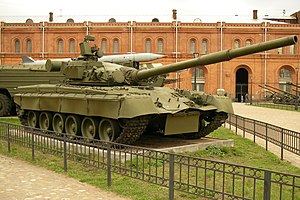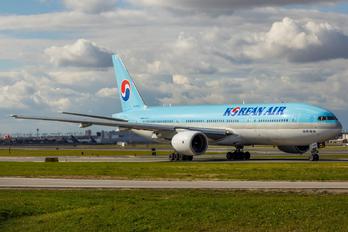I seem to recall the Russian armed forces using the T-80BV in the Chechen war, not the T-80UK or T-80U or the T-80UD, and that the T-80BV had performed poorly (at least in the opening operations around Grozny) whilst being destroyed by Chechen fireteams utilizing RPG-18's and costing some 26 tanks initially deployed to roll into the city. Howver this is a result of the asymmetrical warfare the forces were facing, although the ability of the shaped charges of RPG-7's and RPG-18's to defeat the T-80BV's armor must also be taken into consideration.
http://www.knox.army.mil/armormag/nd95/6warford95.pdf
http://forums.revora.net/lofiversion/in ... 44048.htmlToday T-90 MBT is to make up the steel fist of Russian Land Forces. It is one of the most migthy and versatile combat vehicles of the present day.
But what lurks behind its massively looking reactive armour?
Since the cold war russian tank development step by step followed western military efforts in modernizations, introducing new equipment when it was nessecery in means of security. A good example of such strategy was introduction of T-80 as an answer to mass deployment of Leopard 2 main battle tanks in western europe, or T-80U, designed specifically to counter M1A1 and Leopard 2A5 MBTs. One of such countering steps was meant to assure soviet armor superiority over upcoming M1A2 and expected new Leopard. This project was a massive upgrade to T-72 tank, which was known under the codename "Obiekt 187". The amount of changes was so huge, that new tank should've had obtained a new designation, rather than become another T-72 version. Upgrade touched almost every aspect of the tank, vital to combat efficiency. O187 had a new X-type 1200hp engine, completely new hull, due to new engine housing and new uparmored rectangular glacis (as opposed to V-shaped glacis classic to soviet MBTs), new welded turret with slightly larger and more efficient armor layout, new FCS, superior to the one of M1A1, new 2A66 gun, which was several calibers longer then previous 2A46, upgraded to work faster autoloader (thanks to the larger turret), new long awaited gunner's IR sights. And even being superior to western counterparts this tank was just an intermediate step between T-80U and completely new 5th generation soviet MBT. However these plans crashed against the bitter reality. The unfortunate story of Obiekt 187 ended with the Soviet Union . Without being able to field this tank due to cut founding ministery of defence took a desperate attempt to save at least some of work finished by uralvagonzavod engineers, and it was when T-90 came out. The decision was made to update T-72 only where it was life-nessecery, leaving most of the tank intact since T-72BM. This new child of reality was initialy named "Obiekt 188" in earlier project, then T-72BU during field tests, and finally got an original name T-90 with Yeltsin's blessing, though it was alien to uralvagonzavod naming system (this however was not the only dull aspect of the tank). T-90 did not recieve neither new engine, nor a new hull. Turret remained intact since T-72BM as well. The lack of armor thickness was partly compensated with it's new structure, partly with a new ERA, partly with an introduction of the "Shtora" active defence system. Other advantages from T-72BM consisted of a new FCS, remote machinegun control, borrowed from T-80U, and several minor upgrades including newer version of the 2A46 gun, new ammunition, and IR gunner's sights. The total amount of tanks produced is not clear, however it is definitely below 1000. To compare this tank to M1A2, here are some numbers: T-90 has 840HP V-84MS engine, with the weight of 48 tons it gives a power armament of 18HP/t, the one of M1A2 is 23HP/t. Considering M1A2's logistics problems and advantages on the road, T-90 in terms of overall mobility stands somewhere worse then M1A1 and better then M1A2. In terms of firepower M1A2 has a clear advantage, despite of archaic gun-loading system and thus performance limitation of manually-loading gun. The standart (on 2000m distance) peneteration capability of US M829E2 round stood somewhere near 700-750mm , which was similar, compared to 3BM-44 Russian rounds, but the introduction of M829A3 DU rounds in US Army rises M1's peneteration capability to 800-850mm. The same picture we see with tank's protection - 870mm agains SABOT rounds of M1A2, and T-90's is 800mm, and even this counts ERA effect.
In 1999 T-90 upgrade program was started, and the first stage, known as " Vladimir " upgrade, gave T-90 improved 1000HP V-92S2 engine, and his rightfully own welded turret and autoloader (which allowed to fire 12 rounds per minute, compared to previous 8 rpm ratio). Since then tank was constantly upgraded, with later engine replacement to 1200HO V-99, FCS and armor upgrades, BMS. All of this was enough for T-90 to become a new tank, which was T-90A.
T-80

T-80BV

http://en.wikipedia.org/wiki/T-80










